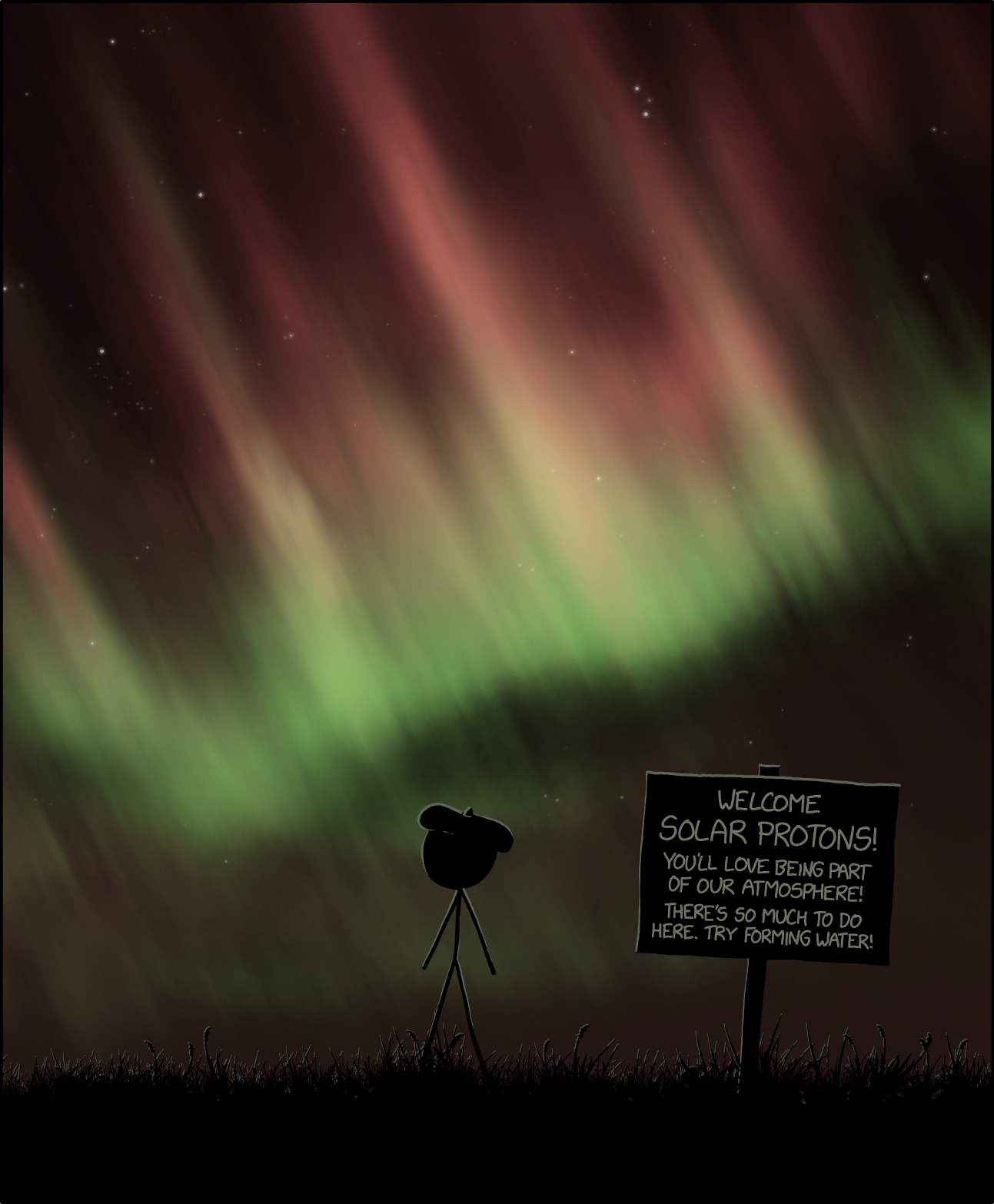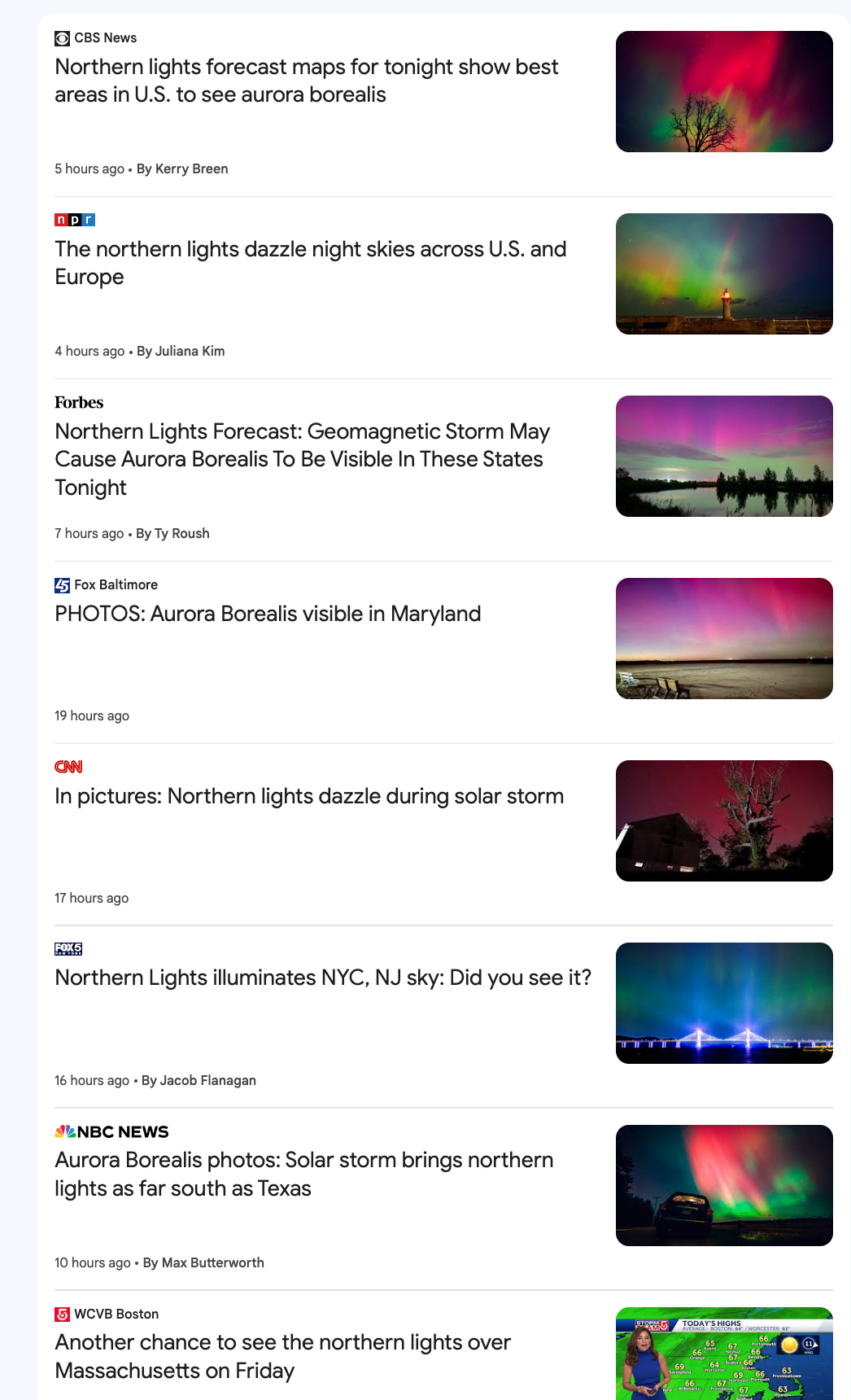Aurora (Colorado and Borealis)
« previous post | next post »
Jonathan Weisman, "As Trump Arrives, Aurora Insists It’s Not the ‘War Zone’ He Sees", NYT 10/11/2024.
And today's xkcd:
Mouseover title: "If any of you want to meet some cool local oxygen atoms, I can introduce you!"
Google News thinks "Aurora" this afternoon is mostly about the effect of the solar wind on the magnetosphere:
Trump's Aurora rally shows up as numbers 11-14 in the list:
[h/t John Berenberg]
And there's some interesting discussion of solar protons in a book (partly) by another web-comic author, namely Kelly and Zach Weinersmith's A City on Mars: Can we settle space, should we settle space, and have we really thought this through?:
The Sun Wants You Dead
As a radiant ball of plasma, the Sun already spends most of its time blasting out hot ions in every direction. Earth’s magnetosphere and atmosphere protect you from most of these. If you’re in space, all things being equal, you’d rather avoid solar radiation, but it doesn’t cause instant death. However, now and then, the Sun undergoes a “solar flare,” when it suddenly increases in brightness. And then there’s something worse: sometimes a solar flare is accompanied by a “solar particle event,” which is a particle event in the same sense that a tsunami is a water event. Visualize a relatively small region of the Sun suddenly ejecting a huge stream of protons that move in one direction like a flashlight beam of death. The good news about these things is that, as science fiction deity Douglas Adams put it, “Space is big.” Randomly aimed death beams will likely miss a teeny tiny human ship. But if you happen to be caught in the headlights, the result will be acute radiation sickness, whose symptoms include vomiting, skin burns, heart issues, lung damage, compromised immune system, and—if the dose is large enough—a painful death.
You may wonder what the plan is if you happen to be aboard a spaceship for this sort of thing. For near-term efforts to go back to the Moon, the procedure in the words of NASA scientist Dr. Kerry Lee is to “make use of whatever mass is available.” That is, redistribute whatever stuff in the spacecraft or station that you can find because it is now your radiation shield. Why not a dedicated radiation blocker? Because that’s a huge amount of mass that costs a lot to send to the Moon and then just sits there. Space settlements will need to do better, and as we’ll see the likely solution involves living underground. […]
Current estimates say that once you leave Earth’s protective atmosphere and magnetosphere, every single cell nucleus in your body will be struck by a proton every few days, and by a larger charged particle every few months.



KeithB said,
October 11, 2024 @ 4:41 pm
My understanding is that solar flares were one of the few things that NASA left to chance for Apollo.
Champacs said,
October 12, 2024 @ 8:44 am
The Aurora Australis rarely get a mention! (They were also visible this past week in the Southern Hemisphere)